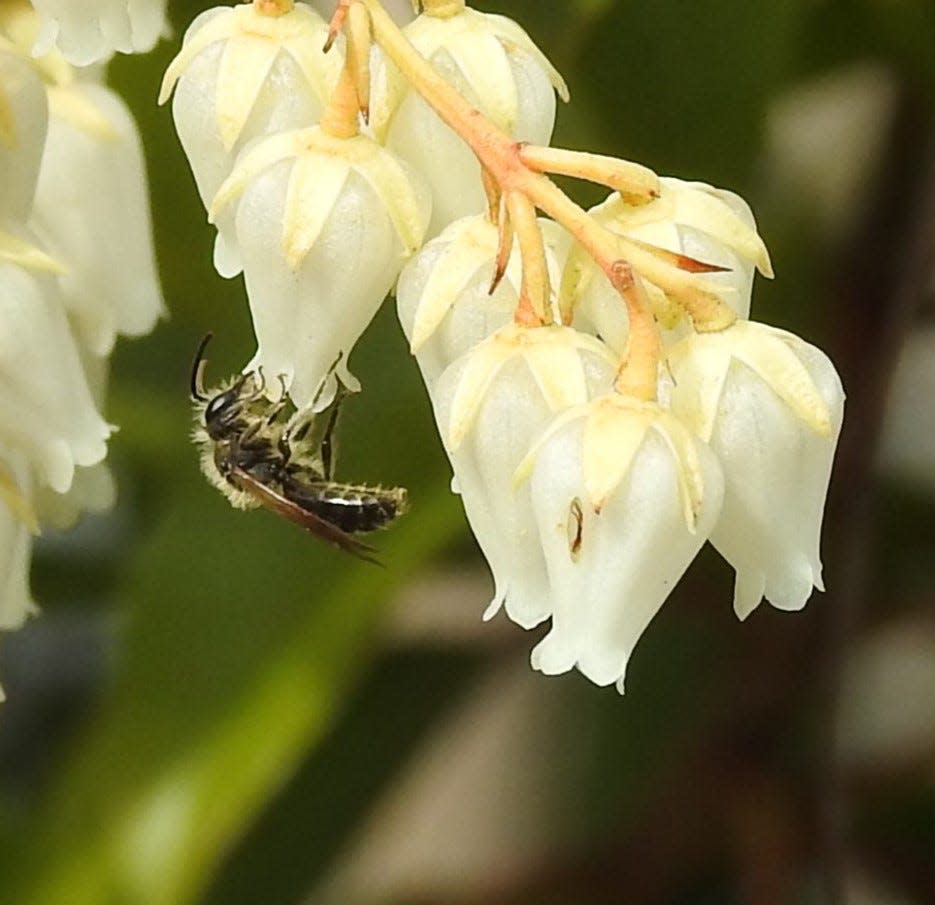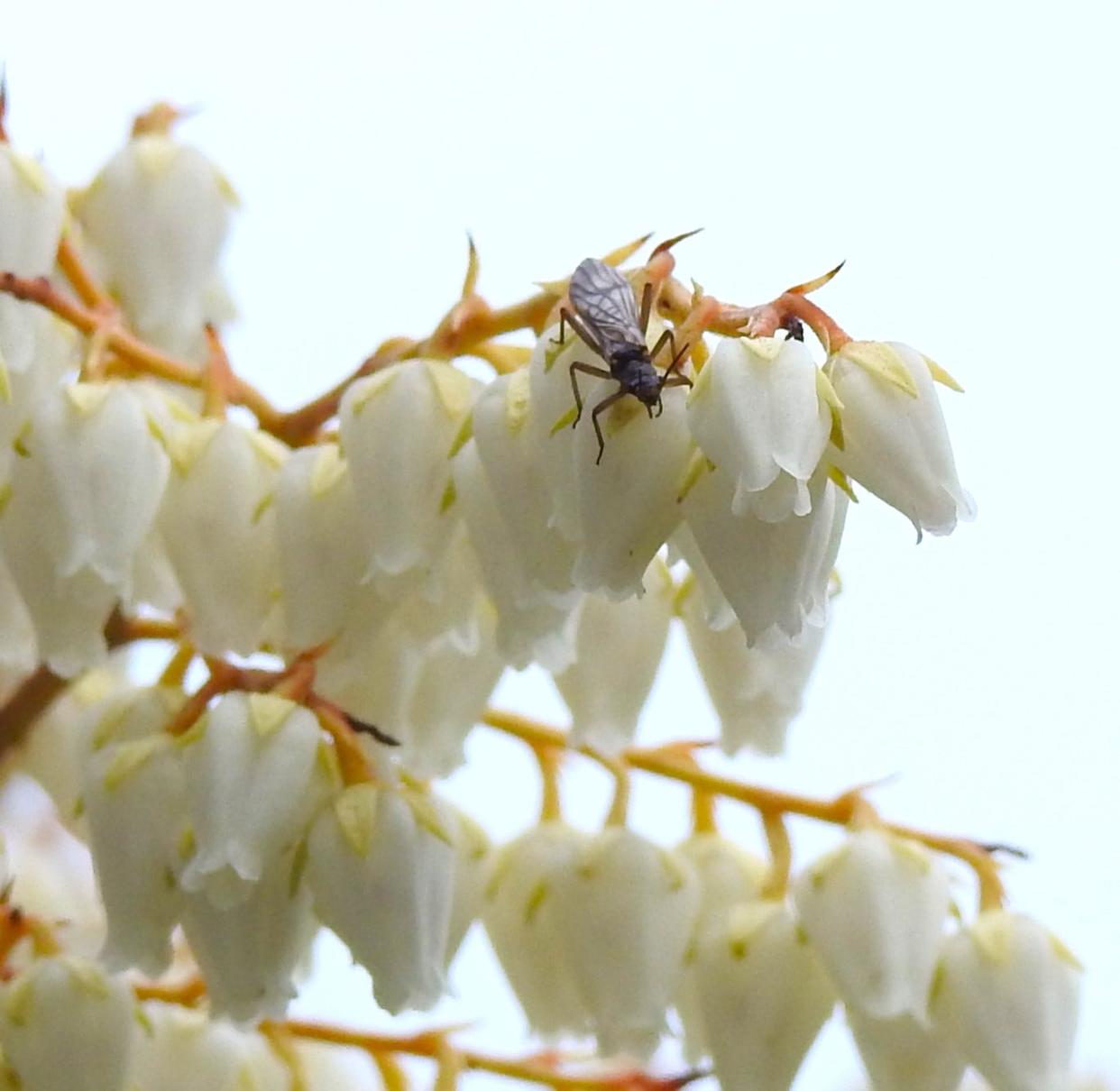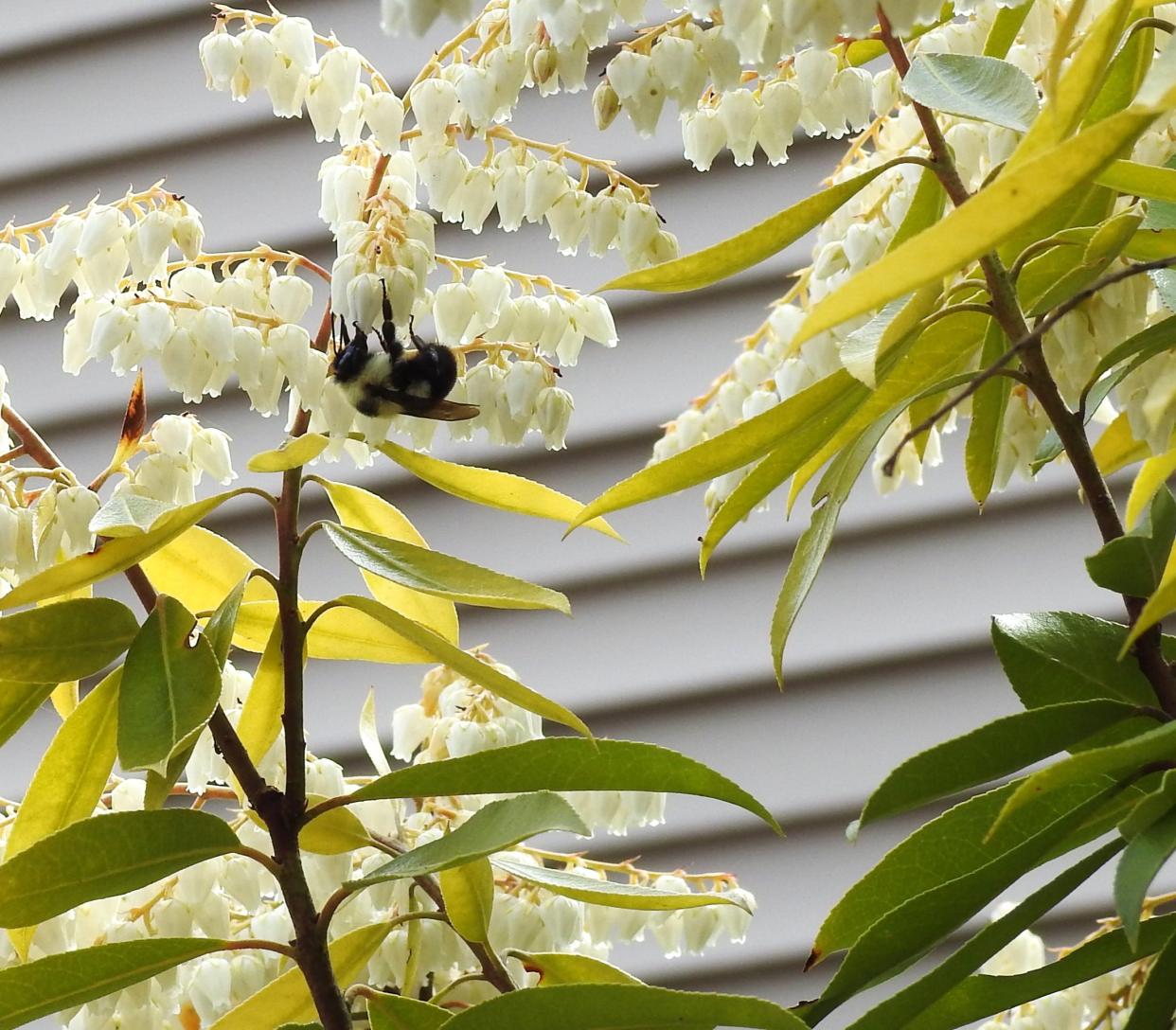Native or non-native plants, that is the question: Nature News
Since moving back to Maine, I have had a fixation on one of the foundation plantings that came with the house.
Unfortunately, I can be judgmental and snobby about what I perceive to be suburban landscape plants, the non-native species you see everywhere. Plants like hostas, hydrangeas, boxwoods, yews, and the shrub I am so fixated on- a large, very healthy andromeda (Pieris japonica) planted next to the side door.
When we moved in, one of the first things I wanted to do was rip it out and replace it with something native and more unconventional. Luckily, I’m a lazy gardener and kept putting it off. Once spring rolled around, I pondered this shrub — what could I replace it with? It was April, and it was starting to bloom, and I noticed something. Small flies, bees and wasps were swarming all over it. It was actually hard not to notice this. Walking by it to get into the house was a bit of an adventure, as this bush buzzed with activity that included some scary, territorial wasps.

Watching all these insects swarming around this bush, I realized I couldn’t get rid of it. It was one of the few things blooming in early spring, making it a great resource for early-emerging pollinators. So, for the last few years, I’ve eagerly waited for it to bloom and see who shows up to feed.
I’ve had to rethink this andromeda more and more as I learn about how best to support the pollinating insects (as far as I know, these are the only animals that use the andromeda, except perhaps nesting birds) in my backyard. I still do not have a concrete answer as to whether or not my andromeda helps, hurts or is neutral. The presence of non-native species, even if they seem relatively benign, can have unintended consequences.
For example, a large number of the bees visiting the andromeda this week were miner bees and bumblebees, two of the earliest types of bees to emerge in the spring. They co-evolved with the early spring wildflowers, just starting to bloom in the woods. Does it help these bees to have the additional nectar the andromeda provides? It could be helpful since our local wildflowers have declined as this area has become more developed. But do the Andromeda flowers supply the same quality of nectar as their wild counterparts? Could too many nectar sources for these early bees encourage population growth that might cause a harmful ripple effect in the ecosystem? These are all unknowns.
When you go to a nursery to buy native plants, you’ll often find something that is labeled "native" is, in fact, a nativar. Nativars are native species that have been bred for showier flowers, different growth patterns or disease resistance.

You can usually determine whether a plant is a true native or a nativar by the name — nativars usually have a cultivar name associated with the species name. For example, I recently bought a vernal witch hazel, found in the "native" plants section of the nursery, but when I got home found the name "Autumn Embers" on the tag. This is a cultivar bred for showy copper-red flowers. A pure native will not have a cultivar name.
Pollinators usually prefer native plants over nativars because often, when selecting for "better" traits these nativars can end up with less nectar and pollen than their native cousins or even a color pattern that is less attractive to the pollinators. Native flowers are often single flowers with an open center that is easy for a pollinator to access.
Nativars are sometimes bred to have more petals (double flowers), resulting in a more striking flower. The problem is those extra petals make it difficult for pollinators to get to the nectar.

My andromeda (Pieris japonica) isn’t a nativar, nor a native. It is an evergreen shrub in the heath family (Ericaceae), native to the mountains of southeast China, Japan and Taiwan. I think the miner bees and bumblebees like it because they are also big fans of our native blueberries (also members of the Ericaceae family). Prior to the introduction of European honeybees, the miner bee was one of the primary pollinators of early-flowering crops like blueberries. If you take a close look, you’ll see the similarity in their flowers.
So, does it stay, or does it go? This andromeda isn’t an invasive species, and I only have one bush. This might be a cop-out, but I’m going to hold onto my andromeda because I feel our pollinating insects need as much help as they can get right now, and nothing I have read indicates the pollen or the nectar of these plants is harmful. But I think it behooves all of us to think before we buy. Buy native whenever possible and join the move to rewild our world. Be aware of the potential impacts of introducing new species into our fragile backyard ecosystems.

Susan Pike, a researcher and an environmental sciences and biology teacher at Dover High School, welcomes your ideas for future column topics. Send your photos and observations to spike3116@gmail.com. Read more of her Nature News columns at Seacoastonline.com and pikes-hikes.com, and follow her on Instagram @pikeshikes.
This article originally appeared on Portsmouth Herald: Native or non-native plants, that is the question: Nature News
